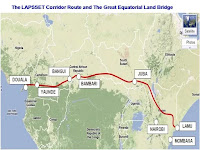Africa should lead in green Industrialization

A Lithium-ion Battery AFRICA should leverage its abundant mineral and green energy wealth to lead in the fourth industrial revolution, experts say. And in this respect, the Democratic Republic of Congo should be the nerve center, they add. The country is rich in mineral wealth and water. It is thus, suitable for the production of cathode precursor materials for Lithium-Ion batteries, a study has established. The government has accepted a proposal to set up a Special Economic Zone for this purpose, we can report. Lithium-ion batteries power everything from your Mobile phone to Airplane batteries. Now that the world is shifting to clean energy to power cars, Lithium-Ion is also powering electric vehicles, EVs. The Democratic Republic of Congo produces 70 percent of the world's cobalt, the basic Mineral in Lithium-ion batteries. Cathode precursor materials are the intermediate material between cobalt and finished cathode material. Currently, precursor materials are produced...








